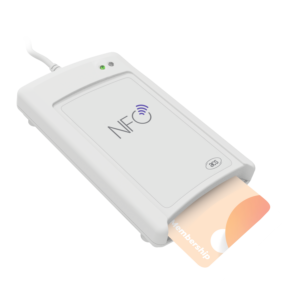Table of Contents
ToggleIntroduction
Since its inception, RFID (Radio Frequency Identification) technology has undergone significant advancements, with High-Frequency (HF) RFID readers emerging as a prominent application. Though this technology has been around for some time, it continues to evolve. This article delves into the evolution of HF RFID technology, its current applications, and its future prospects.

The Future of HF RFID Readers
The outlook for HF RFID technology is promising. In the near future, many industries are expected to adopt this technology to enhance their business operations. One of the most promising sectors for HF RFID readers is healthcare. These readers can track medical devices, hospital equipment, and even patients, thereby boosting hospital efficiency and improving patient care.
Retail is another sector where HF RFID technology is increasingly being utilized. By enabling real-time inventory tracking, HF RFID readers help retailers manage their inventory more effectively. This improved inventory management enhances the supply chain’s efficiency and reduces waste.
As with any emerging technology, the future success of HF RFID readers depends on continuous advancements. As the technology becomes more prevalent, we can anticipate cost reductions, making it more accessible to smaller businesses.
Tips on Choosing the Right HF RFID Reader
Selecting the appropriate HF RFID reader involves considering several factors. Firstly, the environment in which the reader will be used is crucial. For instance, a reader intended for use in a warehouse or industrial setting must be robust and able to endure harsh conditions.
Another important consideration is the reader’s tag reading range. HF RFID readers have varying read ranges, so it is essential to select one that can read tags from the required distance.
Additionally, the type of tags to be used with the reader is important. Some HF RFID readers are compatible with specific tags, so it is crucial to choose a reader that matches the tags that will be employed.
Cost Considerations for Implementing HF RFID Readers
The cost of implementing an HF RFID system can vary based on several factors. One primary factor is the number of readers and tags required. The more readers and tags needed, the higher the overall cost. Another factor is the cost associated with integrating the RFID system with existing systems, which can be a significant expense. Therefore, finding a cost-effective solution is essential.
Understanding the Standards for HF RFID Readers
RFID technology is regulated by international standards. The primary standards for HF RFID readers are ISO 15693 and ISO 14443. These standards define the technology’s operation and ensure compatibility between different tags and readers.
Choosing an HF RFID reader that adheres to these standards is essential, as this guarantees compatibility with various tags. Additionally, selecting a reader that supports advanced features, such as anti-collision, which prevents multiple tags from being read simultaneously, is important.
Conclusion
HF RFID readers represent a pivotal technology that is transforming various industries. As the technology evolves, it is expected to see widespread adoption and enhanced functionalities. When choosing an HF RFID reader, it is important to consider factors such as the operational environment, tag compatibility, and cost. By keeping these factors in mind, businesses can select the most suitable HF RFID reader for their needs and reap the numerous benefits this technology offers.
